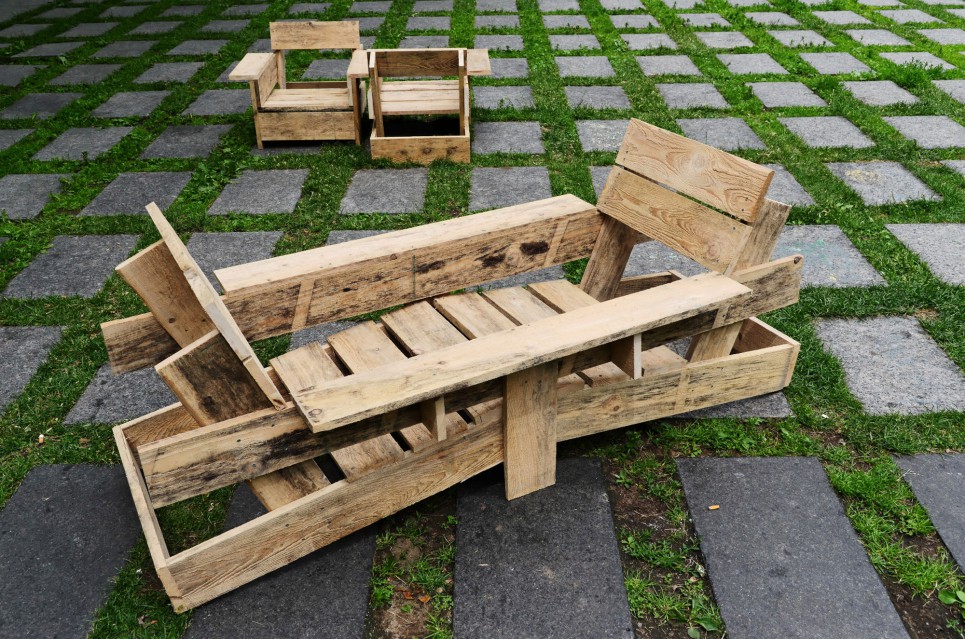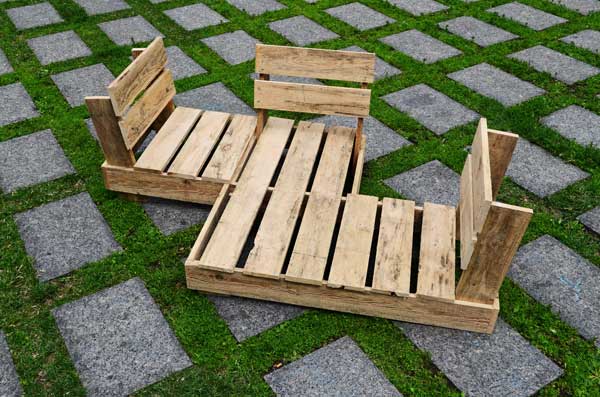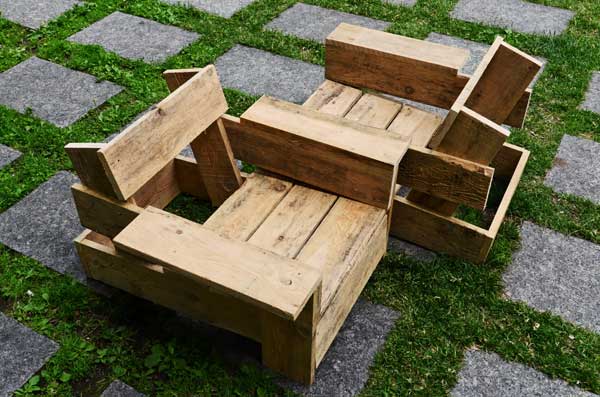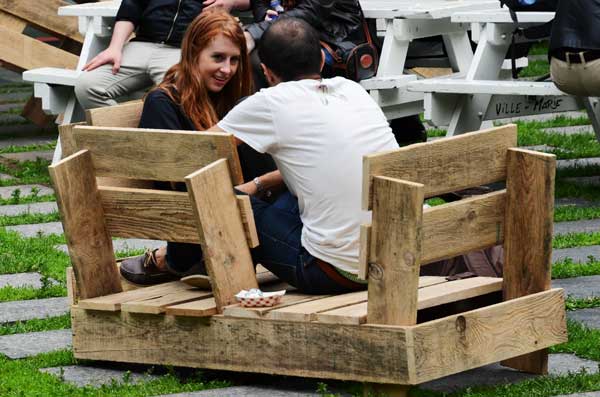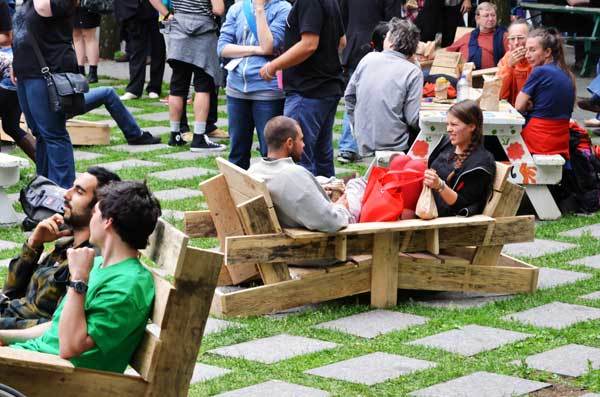future two
in context of: MUTEK
supported by: Goethe Institut Montreal
links: Future Two – Workshop, Artikel – taz.de
A collaborative search for “tools for an unknown future“.
The way our cities appear is often seen as a given, as a permanent fact, as one hard truth we have to live with. Or like a fate, we have to deal with. This is not true. Our cities are a process. Cities are in permanent transition and change, cities develop.
The aim of the workshop is to intervene in Montreal’s public space and to collaboratively produce a temporary installation that will explore the potentials of urban public space as a place for interaction, informal meeting and a new imagination.
With a group of about 14 enthusiast of the public we managed to explore into the realm of public space furniture. the participants took on the question of the non communicative pre-condition of many public furnitures, like benches and went the completely opposite way: a series of seating facilities was produced, that bring people close to each other, that induce communication through closeness. public architecture becomes an invitation, interaction is built in!
THE GENERATOR is an experimental building laboratory for instant, participatory building practices in public space. Central issues of the research include: construction principles, new geometries for furniture and lightweight construction buildings, as well as new use possiblities and multiple programs for people to meet and interact in public.
DER GENERATOR ist ein experimentelles Baulabor für eine plötzliche, partizipatorische Entwurfs- und Baupraxis im öffentlichen Raum. Das zentrale Thema dieser Versuchsanordnung sind Konstruktionsprinzipien, neue Geometrien für Alltagsmöbel und Leichtbaukonstruktionen ebenso wie neue Nutzungsformen und vielfältige Programme, die die Öffentlichkeit anregen, gemeinsam eine Vision zu verwirklichen, zu interagieren, Erfahrung und Expertise auszutauschen. Der Generator erforscht Möglichkeiten des gemeinsamen Handelns im öffentlichen Raum.
The Generator consists of two components: hardware and software. The hardware is a workstation designed for mobility. A set of several flight cases can be assembled as two workbenches. They contain all the necessary tools for eight people to work on site using simple wood slats and plywood as building materials.
Der Generator besteht aus zwei Komponenten, der Hardware und der Software. Die Hardware ist eine mobile Werkbank, die alle notwendigen Werkzeuge für die zeitgleiche Arbeit für bis zu 10 Leuten beinhaltet sowie eine ausklappbare Werkbank. Die Werkzeuge dienen der Bearbeitung von einfachen Rauspundbrettern, Sperrholz und Schrauben. Der Generator ist leicht beweglich und kann so innerhalb kürzester Zeit zu einer kleinen Werkstatt aufgebaut werden.
The software is a set of construction plans and instructions for modules, which are developed for easy assembly. The construction methods will be constantly tested and improved. The modules can be assembled into chairs, tables, and shelves, as well as walls and shelters. The participants can transform the modules accidentally or intentionally. A process of learning by doing. The team will record and reuse all possible mutations of the system and incorporate them into a growing structure.
Die Software besteht aus einem Set von Plänen, Bauanleitungen und gegebenenfalls Schablonen für den schnell erlernbaren Bau von Objekt- und Raummodulen. Die Module können zu Stühlen, Bänken, Tischen etc. kombiniert werden aber auch zu Wänden und kleinen Raummodulen. Beim Bauen können die TeilnehmerInnen die Software ändern, weiterentwickeln, perfektionieren, erneuern – absichtlich oder auch zufällig. Ein learning-by-doing Prozess.
